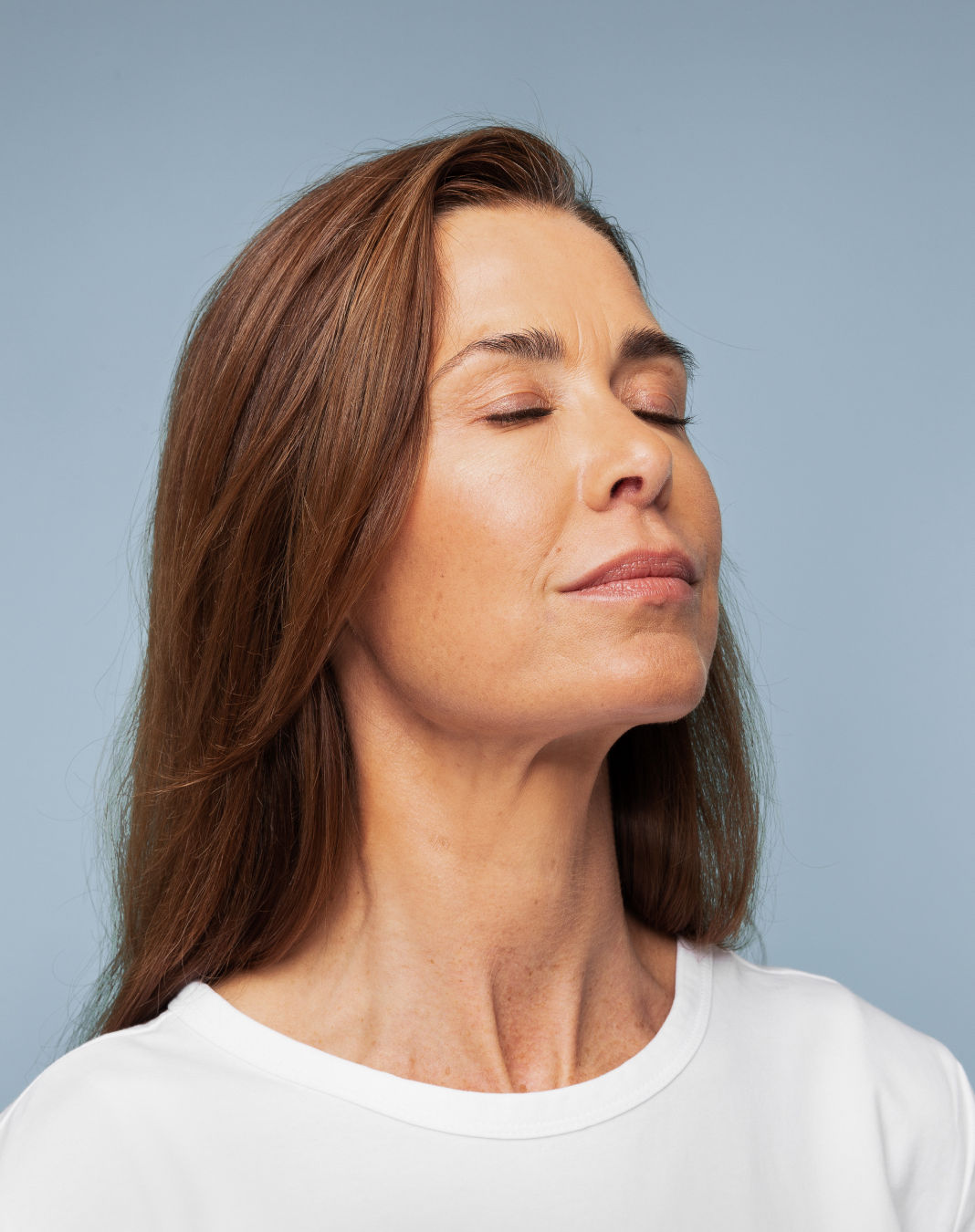Recommended Skincare
Morning:
1. Niactil Cleanser
2. Ceactil Everyday Serum
3. Niactil 4%
4. Ultradefense SPF 30
Evening:
1. Niactil Cleanser
2. Glyactil Pads (2-4 x week)
3. Retinext Advanced Serum
4. Niactil Advanced Pro

Skin Condition
Abnormal skin pigmentation is a common skin condition that is characterized by darker areas of skin, first appearing in areas that are exposed to direct sunlight such as the face, hands and arms.

There are many differing degrees of hyperpigmentation, with the most common being Melasma and skin damage due to exposure to direct sun light can vary in seriousness.
It is a difficult condition to treat seeing as it is often accompanied by hormonal changes and that long-term damage from sun light can be deep seated.

What are the indicators of Melasma?
Melasma is typically characterized by a symmetric pigmentation on the face. It usually effects the chin, upper lips, and forehead. The condition is provoked by sun light and therefore more prevalent during the summer.
What can trigger Melasma?
The exact cause of Melasma is currently unknown, how ever there is a very close correlation between its development and exposure to sun light. Use of birth control pills or hormonal IUD’s may provoke the condition, and those with darker skin types may also be predisposed. Melasma during pregnancy is quite normal and known as Kloasma, often referred to as “the mask of pregnancy”.
How to treat Melasma?
There are no definitive long-term cures available. Data suggest that in time the effects may abate in women when they stop taking birth control pills, or after giving birth. However, with the correct treatment this process may be shortened. Normal treatment is with Kojic-acid, Arbutin, fruit acids, Retinols, Azeloglysin and antioxidants which have a bleaching effect and normalize the production of melanin in the epidermis.
Pigmentations spots
Pigmentation spots is referred to medically as Solar Lentigo, these are pigmentation spots caused by over exposure to sun light and the symptoms generally increase with age and is regarded to a certain extent as a hereditary condition.
What are the characteristics of pigmentation spots?
Damage due to sun light is most common on the face, near the hair line, chest and back of the hands. It is cause by a local proliferation of melanocytes and the build up of melanin, the skin natural defense against sun light. The pigmentation spots may vary considerably in tone, from a light brown to almost black color.
How normal are pigmentation spots? Over 90% of white Americans over the age of 60 experience in some degree Solar Lentigo, and 20% over the age of 35. Cases in Scandinavia have increased due to the increased use of Solariums throughout the year. With any first indicators of a change in skin pigmentation, it is recommended that one consults a specialist in order to rule out the possibility of Melanoma (Skin Cancer). Normal pigmentation spots are not a serious condition and generally regarded as having only cosmetic implications.
How can one treat Pigmentation Spots?
Preventative treatment is of paramount importance. Regular use of sunscreen during periods of high UV rays is highly recommended. Treatment creams containing Kojic-acids, Retinols, Azeloglysin and antioxidants have a bleaching, reparative and preventative effect. The Retinext Product line, including Glyactil Pads, Acticlear Even Tone Serum are recommended together with Niactil 4% and sunscreen. Oilier skin types will experience improved results with the use of Acticlear Gel instead of Acticlear Even Tone Serum.
Chemical Peeling treatment with a recognized dermatologist, in combination with home treatment will give improved results.
Recommended Skincare
Morning:
1. Niactil Cleanser
2. Ceactil Everyday Serum
3. Niactil 4%
4. Ultradefense SPF 30
Evening:
1. Niactil Cleanser
2. Glyactil Pads (2-4 x week)
3. Retinext Advanced Serum
4. Niactil Advanced Pro
